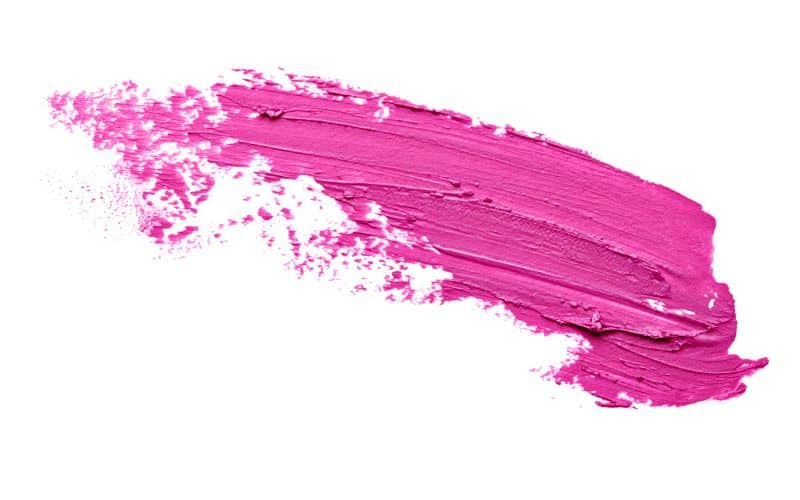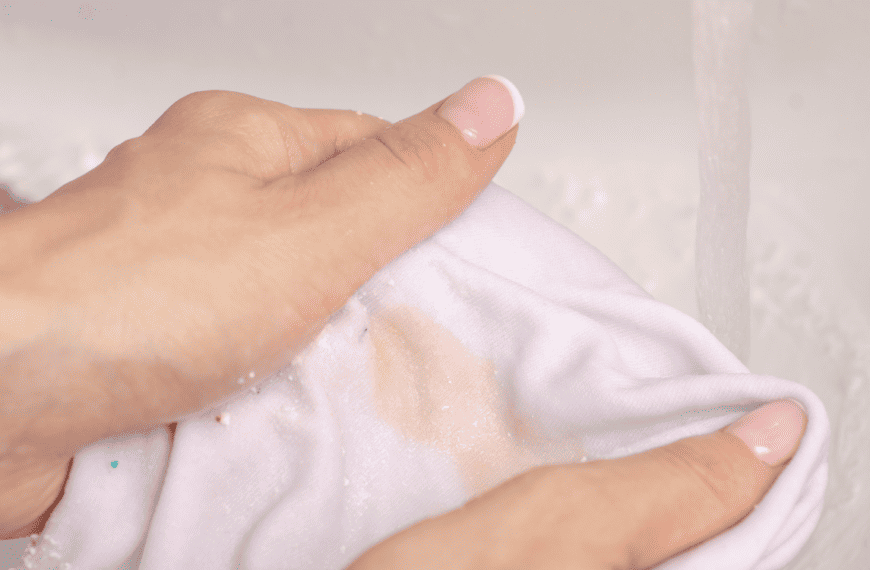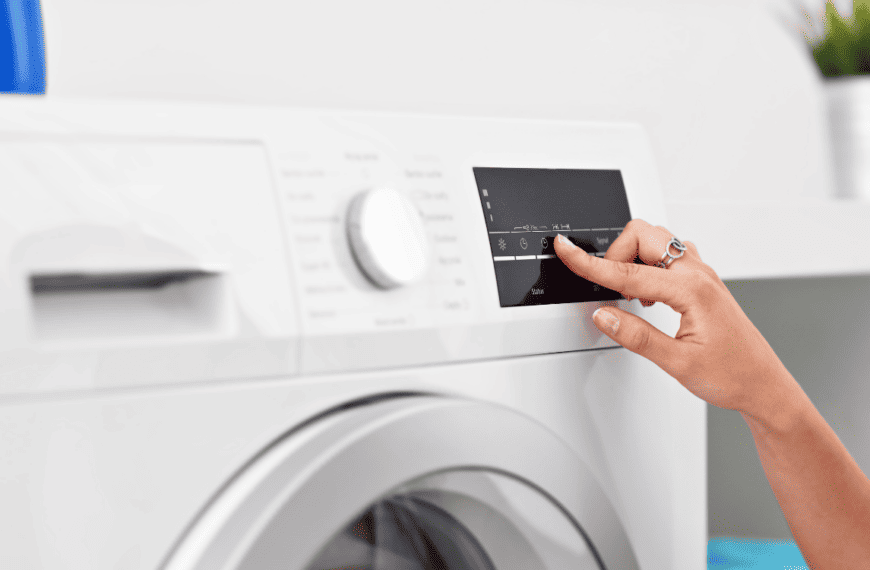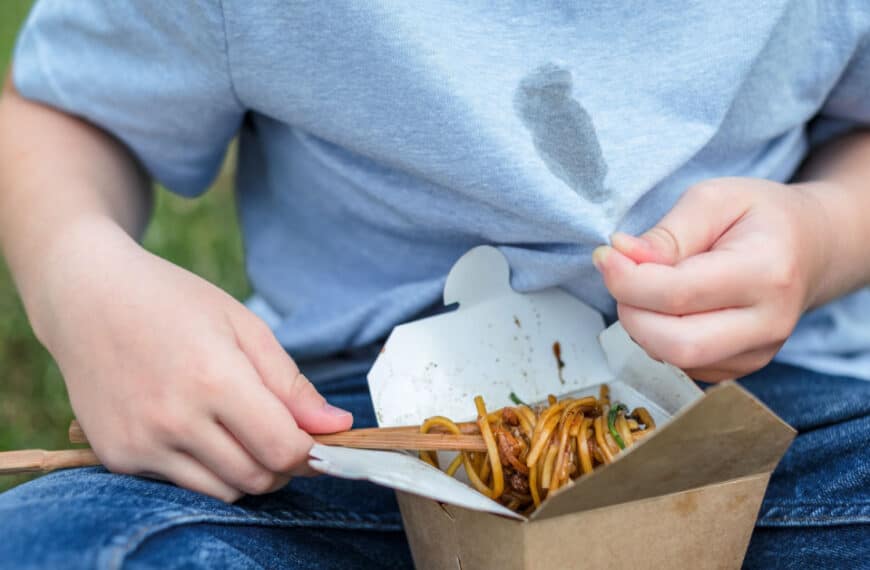A lipstick tube in the wrong hands can be a dangerous thing. Maybe the kids got into your makeup, or you made an unfortunate move while getting ready for a night out. Whatever the cause, one minor lipstick slip is all it takes to leave a challenging cleanup on your hands (and clothing).
High-quality lipstick’s exceptional hold can create a unique problem. The assorted wax, oils, and pigments are taxing enough to clean individually. Together in a lipstick stain, they can dig into the fabric and become more grueling with every cleaning effort. To save time, frustration, and, most importantly, your garments, try these easy and efficient techniques to remove lipstick stains from clothing.
How to Remove Lipstick Stains from Clothes
Treat your lipstick-stained clothing as quickly as possible. You don’t want to let the stain set, move, or dig deeper into the fabric fibers.
Before choosing a lipstick stain remover, you must check the care label. Identify the material blend to ensure your cleaning solution won’t damage the fibers or strip the dyes from your stained garment. If you have the time, the dry cleaner may be the best option for removing lipstick stains from natural materials, such as silk, wool, and velvet.
Watch Your Fingers
Lipstick can get everywhere while you work with your cleaners, especially if it transfers to your fingers. While you remove lipstick in one spot, you could accidentally get it on an area of clean cloth. Then you’ll have a whole new mess to manage. Keep the clothing backed with a paper towel to prevent dye transfer while you clean, and watch what you touch.
Scrape Off Excess Lipstick
It may not be necessary with a light smear, but try gently scraping off as much lipstick as possible with a dull knife or spoon. You’ll have to compress the stain while cleaning to remove it, so removing any excess lipstick from the surface layer is essential. You don’t want to smash any clumps that spread and drive the lipstick stain deeper into the material.
Pre-Treat the Stain
When you pre-treat stains well, lipstick shouldn’t have much trouble coming out in the wash. Several ingredients go into the average lipstick tube, so you’ll typically want to try a combo solvent like Shout to start the stain-removal process. Otherwise, a liquid detergent applied directly can be effective when given several minutes to work on the stain.
Each solution below will work as a pre-wash stain remover. You may also find they completely remove the stain without needing to go through a cycle. Regardless, we recommend washing afterward should any residue from the cleaner or stains remain.
1. Dish Soap
Dish soap is a surfactant, using molecules that surround and separate grease and oil stains from surfaces, drawing them into a water solution. Some of these products are alkaline, which can damage natural organic fibers such as wool or silk. Cellulose-based materials, such as cotton, linen, and acetate, don’t have the same issue, allowing you to use mildly alkaline cleaners, like standard laundry detergent.
Organic fabrics like wool won’t necessarily break down from dish soap, but it must be as pH-neutral as possible. Look for bleach-free options, or try baby shampoo if you don’t have mild soap. Use only a tiny amount for lipstick stain removal to prevent unnecessary wear on the material.
Tools and Materials
- Paper towels
- Mild dish soap
- Warm water
- Soft-bristled brush or toothbrush (optional)
How to Clean Lipstick Stains with Dish Soap
- Lay your garment on a table with a paper towel under the stained area
- Dampen the lipstick stain with cold water
- Add a drop or two of dish soap to the stain
- Work the dish soap into the lipstick stain without smearing it
- Continue gently blotting the soap into the spot until it starts to fade
- Rinse the stain with cold water
- Repeat steps 3–6 if any lipstick remains
- After removing the lipstick stain, launder the garment according to its instructions
Alternatively, you can soak the stain in your dish soap and water solution for about 15–30 minutes. When the time is up, gently scrub the stain with a soft brush or toothbrush. Finish by following steps 6–8.
When to Avoid: Wool, silk, or other protein-based organic fibers (use only a small amount of pH-neutral soap)
2. Acetone
Acetone is a solvent effective in cleaning various oil-based substances. You can use solvents on several natural and synthetic materials, including cotton, wool, silk, and polyester. The material considerations are similar to codes for cleaning fabric couches. Natural fabrics generally tolerate solvent-based (dry-clean-only) solutions, like acetone and rubbing alcohol. Meanwhile, synthetics usually take water-based cleaners.
If you don’t have acetone, try a nail polish remover containing it. While not as strong, nail polish remover can help you spot-treat light stains. Remember that acetone can remove various fabric dyes from your clothing in any concentration. Spot test the cleaner on an inconspicuous section of the garment, like the inside hem.
Tools and Materials
- Paper towels
- Nail polish remover
- Cotton balls
- Soft-bristled brush or toothbrush (optional)
How to Remove Lipstick Stains with Acetone
- Lay a thick paper towel on a flat surface
- Place the garment on the paper towel with the stain side down
- Soak a cotton ball in nail polish remover and apply it to the backside of the material
- Blot the stain to transfer it to the paper towel, moving it frequently to a clean patch
- Continue blotting until the stain disappears
- Wash the clothing according to the care label
For a little extra lipstick stain-removal power, use a soft brush. Gently scrub the excess lipstick as the acetone sits on the stain to lift it away.
When to Avoid: Rayon, viscose, acrylic, or any material containing acetate
3. Rubbing Alcohol
Another solvent, rubbing alcohol works similarly to acetone in removing wax, dyes, and oily stains from clothing. While it’s also generally safe on natural fibers, you may have similar color-bleed issues. Do a discrete spot test before applying it to the lipstick stain.
If you don’t have any rubbing alcohol, standard clear vodka can also work. And in a pinch, you can even try hand sanitizer or hairspray to some effect, as long as the product contains alcohol.
Tools and Materials
- Paper towels
- Rubbing alcohol
- Cotton ball
- Soft-bristled brush or toothbrush (optional)
How to Remove Lipstick Stains with Rubbing Alcohol
- Lay a paper towel on a flat surface, and place the stained clothing on top with the stain side down
- Saturate a cotton ball with rubbing alcohol, and gently dab the stain
- Continue blotting until the stain transfers to the paper towel, moving as needed to give the stain a fresh patch under it
- Rinse with water
- Wash according to the garment label
Once again, you can also try removing lipstick from clothes by blotting the stain directly with rubbing alcohol and scrubbing it lightly with a soft brush to lift it.
When to Avoid: Rayon, viscose, acrylic, or fabrics containing acetate
Check for Stains After Washing
While hot water in the washing machine can melt and whisk away waxes and oils in lipstick, the dryer’s heat can set a stain deeper into the fabric. No matter which solution you use, always check your garment after taking it out of the washing machine. If the lipstick remains, you’ll have to try an alternative stain remover before rewashing.
If you have a white cotton garment, chlorine bleach may be able to strip the unwanted color. Given about 30 minutes in diluted bleach, the stain should lift.
You can also use oxygen bleach, an excellent alternative to chlorine bleach that will work on different colored fabrics. Though effective, you may need to let your garment soak for up to eight hours. Whether you use chlorine or oxygen bleach, machine-wash the garment after treating it.
Does Vinegar Remove Lipstick Stains?
Distilled white vinegar is an excellent all-around cleaner for household chores, but getting lipstick out of clothes is one area where it doesn’t shine. It can have limited effectiveness, depending on the stain’s severity, but standard white vinegar shouldn’t be a first option.
Weak acids like vinegar don’t remove wax or oils like surfactants. If you have the ability, skipping the vinegar and choosing dish soap or a dab of laundry detergent will likely yield faster and better results.
What’s in Lipstick?
Lipsticks primarily consist of three ingredients: wax, oil, and pigment. Providing the consistency that lets lipstick smear across clothes with ease, wax often comes from petroleum or natural sources, like carnauba, candelilla, or beeswax.
Oils keep lips hydrated, as they lack glands to keep themselves moist. Vegetable oils, such as castor, coconut, or olive oils, are popular moisturizers, as are petroleum jelly and lanolin.
Lipstick pigments cover a grab-bag of different materials. Various metal oxides in lipsticks provide yellow, red, white, green, and black shades. But many colors are also plant or animal-based. A popular example of the latter is the cochineal beetle, an insect that becomes a red lip colorant. You may see it noted as “carmine” or “natural red 4” on your lipstick ingredients label.
Aside from the primary texture and color-forming ingredients, lipsticks may include several other substances to improve longevity or enhance the shade.
Antioxidants are a common additive, helping to prevent oxidation. Alcohols form a smooth consistency. Minor notes of fragrance, sunscreen, and other ingredients provide further protection. With so many materials at play, using a detergent or pre-treatment product provides the most complete solution for lipstick stains on clothes.
Find Relief from the Laundry
No matter how innocent, lipstick stains have no place on clothing. They demand immediate attention if you want to save your favorite shirt. But after dealing with all of your daily household duties, one more unexpected chore is likely the last thing you’ll want to face.
If you’re one lipstick stain away from going over the edge, it’s time to de-stress with trusted house cleaning help. At Anita’s, we make every effort to accommodate your schedule, cleaning needs, and budget, offering an experience to exceed your expectations. Give yourself a break from the stress of the mess, and request a booking with a local cleaning pro today.









